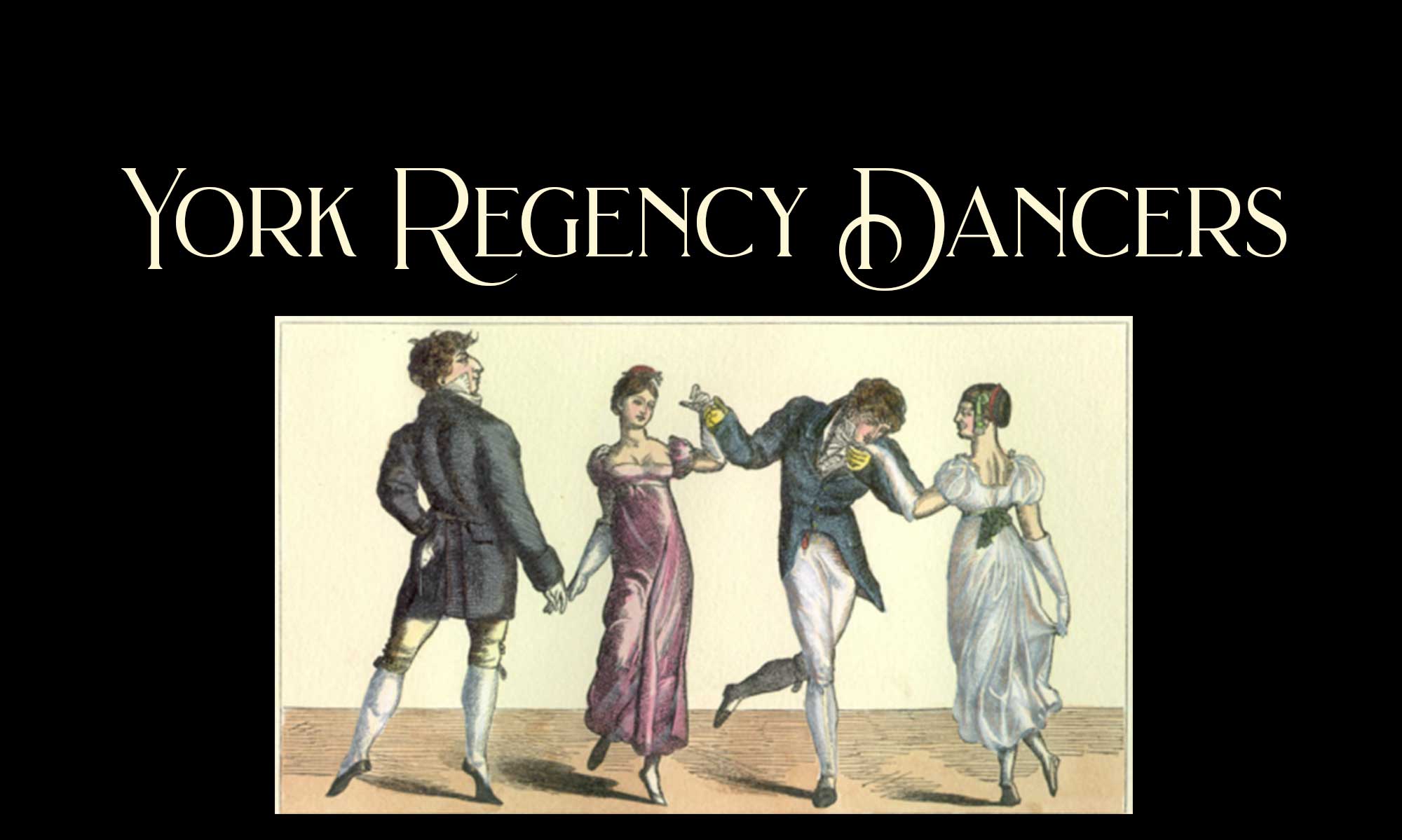Dances of the Regency Era
English Country Dance
The English Country Dance (ECD) began during the reign of Queen Elizabeth I, and quickly became a favourite amongst all the social classes. Most know the dances written by Playford beginning in 1651, which are much older than many of the dances executed during the Georgian era. ECD was danced in long lines with men on one side, and women on the other. Dances started at the top of the set with the first couple, who worked their way down through the other couples. As they progressed down, other couples who reached the top could begin. The dance lasted until everyone had a chance to be the lead couple, so dances could last an extremely long time, sometimes up to an hour! This style of dance became the main dance performed at an assembly or ball. It even spread to France where the dance became known as the Contredanse Anglaise. ECD was replaced by the waltzes and polkas of the Victorian era. However, ECD was to experience a revival by Cecil Sharp in the early 1900’s, and has remained a popular social dance around the world.
Cotillions
Unlike country dances, the cotillion was brought from France to England around 1766. This was a different form of dance because of its square formation. The cotillion was a very lengthy dance, as there was a chorus figure that differed between cotillions, but also nine or ten changes. The chorus figure generally gave the dance its name. Some of the changes, or figures, included the rigadoon step, star figures, circling, and the grand chain, to name a few. The chorus and the changes were danced alternately.
Quadrille
The quadrille was very much like the cotillion. It was also danced in a square formation, but it was much shorter. The dance comprised five parts: Le Pantalon, L’été, La Poule, La Pastourelle, and the Finale. This dance came over to England from France in the early 1800’s. There are records of quadrilles being done at the Duchess of Devonshire’s home in 1803. This dance was officially danced at Almack’s in 1815.
Scotch Reel
The Scotch reel was a dance for 3, 4, 5, or 6 people in a straight line. The lively dance has two parts, fancy footwork and heying.
Minuet
The minuet is a very old 3/4 time dance that began a ball. This dance was very popular during the 18th century, and seemed to die down in the Regency era. However, the dance was still being done, though rarely, in 1816. One couple at a time would perform this dance together in order of rank. The dance featured lots of footwork and required lots of grace to do the dance justice. The common figure in the dance is the “Z” pattern, where the dancers trace a “Z” on the floor.
Waltz
The waltz done in the Regency era was much different than the modern waltz danced in today’s ballrooms. The waltz was first introduced to British society in 1812 by Baron Neuman, although it did not originate there. This dance was created and made very popular in Vienna in the 1780’s. The waltz created quite a stir in London, because men were able to hold women in their arms. This is not to say that dances in waltz time did not occur, because many country dances did, but the various arm positions and figures made the dance extremely shocking. The German waltz was the first to be introduced into society, and was followed by the French waltz shortly after. The French waltz has multiple parts: the slow waltz, the jette (which was faster), the sauteuse (which was even faster), and slow waltz once again to finish the dance.
Boulanger
The boulanger, meaning baker, was the finishing dance at a ball. It took place in a circle formation and alternated between turning the other dancers in the circle and their partner. Once everyone had done those movements in one direction, the dance was repeated going the other way to finish the dance. Read Alma Sinan’s short story Step in Time here.
